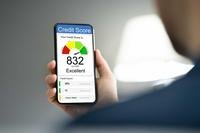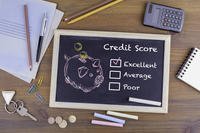This content is provided courtesy of SavvyMoney.
There are many ways to pay off debt. As you think about creating a plan to manage your debt, remember the ideal technique for you is the one that works for you and that you can follow.
A surprising fact about debt is that over 65% of people who set a goal to get out of debt never actually create a plan. With weight loss, telling yourself to lose 10lbs doesn’t get you anywhere and neither does simply saying ‘I need to pay off that credit card.’ Without a plan there is no driving force to make you lose that extra 10 lbs (or pay off your debt) so it’s no surprise that the success rate is low. Creating Your Debt Paydown Plan In this step, we’ll show you how to set up your own debt paydown plan. You can do this on your own or consider our online membership at SavvyMoney.com where you get pull in your account information automatically and set up automatic tracking. 1. Quit spending on credit. You’re in a debt hole…quit digging!2. Define your Monthly Commitment. Credit card minimum payments are designed to fall each month with the result that each month you pay less and less principal toward your loan. However, if you set a constant payment amount you actually pay more principal each month. This technique can pay off debt in as little as four years and reduce interest costs by up to 50%. Across all your debts, this concept is called your “Monthly Commitment”—the constant amount you’ll apply to debt each month.
To decide your Monthly Commitment, start with the sum of your minimum payments and then increase it if you feel you can pay more. Even starting with your current minimum payments will pay off your debts in 4 years if you just do it consistently each month.
3. Choose a debt payment technique. Choose a technique to pay off debt. These popular approaches differ in how they determine the order in which accounts will be paid off. Both approaches keep the total Monthly Commitment constant over time so you can make rapid progress. “Snowball”: pays off the lowest-balance account by making minimum payments on all accounts except the lowest-balance account and allocating as much as possible to this account until it is paid off. After that account is paid off, the next-lowest balance account becomes the focus. “Debt stacking” prioritizes the highest APR account for payoff, making minimum payments on all other accounts and applying any extra cash to this account. 4. Create a system to track your plan. Ever heard the phrase “If you can’t measure it, you can’t manage it?” The same holds true with your debt plan. You can use our SavvyMoney worksheet to help you manage it or you can use SavvyMoney online. 5. Advanced techniques. These techniques can speed up your debt repayment but are not necessary for success. a. Lower your interest costs by renegotiating your credit card. b. Lower your expenses and increase your Monthly Commitment. c. Find cash that you can apply to debt. Consider applying savings to debt or selling little-used possessions. d. Increase your earnings by completing education that can increase your pay grade or volunteering for an assignment that pays more. Remember when you are creating your plan it is important to find one that works for you. Commit to a monthly amount that you can dedicate to debt payments each month. As you start on this path to becoming debt free, you’ll notice that it’s hard at first but it WILL become easier over time. If tracking and executing your plan manually is not your cup of tea, take a look at SavvyMoney.com. We provide an automated tool to help you create and execute a plan for getting out of debt. See you at the finish line. Next, you’ll learn how to appoint a Family CFO. Brought to you by SavvyMoney.com, the leading online debt payoff program.











